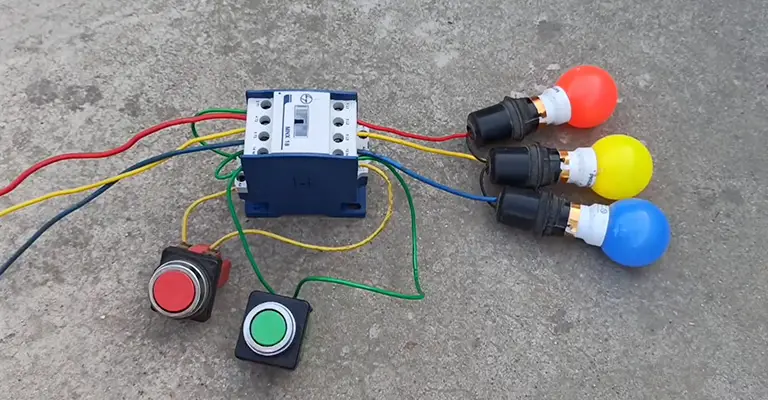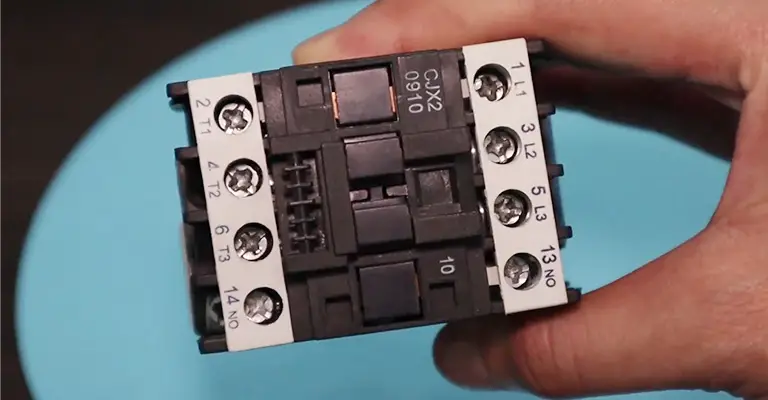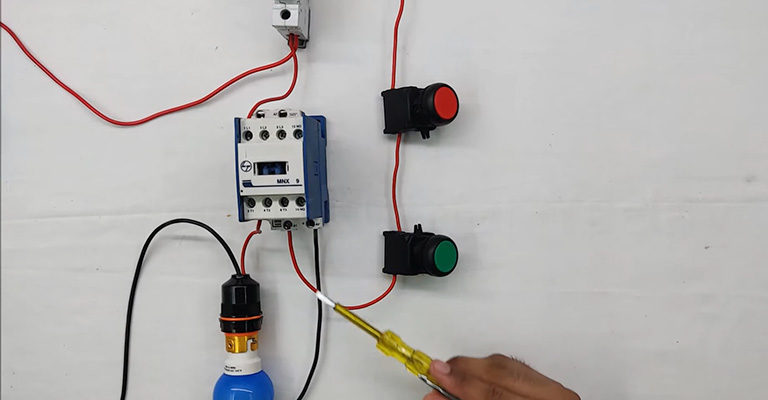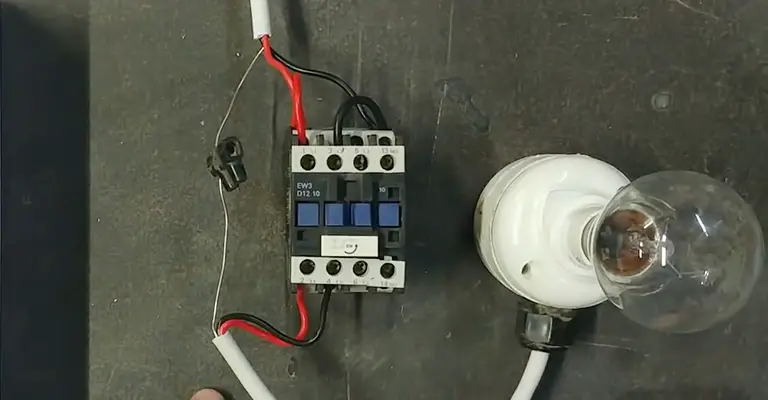You may need to wire a contactor with a 240V coil if the circuit you are working with requires a higher voltage or current than a standard 120V contactor can handle.
A 240V contactor is typically used in circuits that have a higher power demand, such as for large appliances or industrial equipment.
Using a 240V contactor and coil allows the contactor to handle the increased power demand and switch the circuit on and off as needed.
It is important to choose the correct contractor and coil for your circuit based on the voltage and current requirements.
Using the wrong contractor or coil can damage the contactor and create a safety hazard. It is also important to wire the contactor and coil correctly to ensure that the contractor functions properly and safely.

What Is A Contactor?
A contactor is a type of electrical switch that is used to control the flow of electricity to a load, such as a light or appliance. It is typically used in circuits that have a higher voltage or current than a standard light switch can handle.
A contactor has two sets of contacts: one that is controlled by an electromagnet, and one that is connected to the load.
When the electromagnet is energized, it attracts the contacts and completes the circuit, allowing electricity to flow to the load.
When the electromagnet is de-energized, the contacts separate and the circuit is broken, preventing electricity from flowing to the load.
What Is A 240V Coil?

A 240V coil is a type of coil that is used in a contactor to control the flow of electricity to a load.
The coil is an electromagnet that is energized by a 240V power source, which creates a magnetic field that attracts the contacts on the contactor and completes the circuit.
When the coil is de-energized, the magnetic field is no longer present, and the contacts separate, breaking the circuit and preventing electricity from flowing to the load.
A 240V coil is commonly used in circuits that require a higher voltage or current than a standard 120V coil can handle.
It is important to choose the correct coil for your contactor based on the voltage and current requirements of the circuit you are working with. Using the wrong coil can damage the contactor and create a safety hazard.
How To Wire A Contactor With A 240V Coil?

To wire a contactor with a 240V coil, you will need the following:
- The contactor itself, which can be purchased from a hardware or electrical supply store.
- A 240V power source, which can be a circuit breaker or fuse box in your home’s electrical system.
- Wire strippers and wire nuts for connecting the wires to the contactor and power source.
- A screwdriver for securing the wires to the contactor and power source.
Here are the steps to wire a contactor with a 240V coil:
- Turn off the power to the circuit you will be working on at the circuit breaker or fuse box.
- Use the wire strippers to strip the insulation off the ends of the wires that will be connected to the contactor and power source.
- Connect the black wire from the power source to the L1 terminal on the contactor, and the red wire from the power source to the L2 terminal on the contactor.
- Connect the white (neutral) wire from the power source to the neutral terminal on the contactor.
- Connect the other end of the black wire to the load (such as a light or appliance) that you want the contactor to control.
- Connect the other end of the red wire to the load as well.
- Use wire nuts to secure the connections and make sure they are tight.
- Use the screwdriver to secure the wires to the terminals on the contactor and power source.
- Turn the power back on and test the contactor to make sure it is functioning properly.
Remember to always use caution when working with electricity. If you are unsure about any part of the wiring process, it is best to hire a licensed electrician to handle the job for you.
Safety Tips

Yes, there are a few safety tips to keep in mind when wiring a contactor with a 240V coil:
- Always turn off the power before beginning any wiring work. This will prevent you from being electrocuted or causing a short circuit.
- Use wire strippers and wire nuts to properly connect the wires to the contactor and power source. This will ensure that the connections are secure and will not come loose.
- Make sure that the wires are connected to the correct terminals on the contactor and power source. Incorrect connections can cause damage to the contactor and create a safety hazard.
- Use a screwdriver to securely fasten the wires to the terminals on the contactor and power source. This will prevent the wires from coming loose and potentially causing a short circuit.
- Keep your work area clean and free of debris. This will prevent accidents and make it easier to see what you are doing.
- Wear protective equipment, such as gloves and safety glasses, to prevent injury to yourself and others.
If you are unsure about any part of the wiring process, it is best to hire a licensed electrician to handle the job for you. This will ensure that the work is done safely and properly.
Cost To Hire A Licensed Electrician For This Job
It is difficult to provide an exact cost for hiring a licensed electrician to wire a contactor with a 240V coil, as the cost can vary depending on several factors such as the location, the complexity of the job, and the electrician’s experience and expertise.
In general, however, hiring a licensed electrician to handle the job is likely to cost more than doing it yourself, as the electrician’s time and labor is typically more expensive than the cost of the materials.
To get a better idea of the cost, it is best to contact several licensed electricians in your area and ask for quotes.
This will allow you to compare prices and choose the electrician that best fits your budget. Keep in mind that it is always worth investing in a licensed electrician to ensure that the work is done safely and properly.
Conclusion
In conclusion, a contactor is a type of electrical switch that is used to control the flow of electricity to a load. It is typically used in circuits that have a higher voltage or current than a standard light switch can handle.
A contactor has two sets of contacts: one that is controlled by an electromagnet, and one that is connected to the load. When the electromagnet is energized, it attracts the contacts and completes the circuit, allowing electricity to flow to the load.
When the electromagnet is de-energized, the contacts separate and the circuit is broken, preventing electricity from flowing to the load.
To wire a contactor with a 240V coil, you will need the contactor, a 240V power source, wire strippers and wire nuts, and a screwdriver.
Follow the steps outlined above to properly connect the contactor and coil to the power source and the load.
Remember to always use caution when working with electricity and hire a licensed electrician if you are unsure about any part of the wiring process.







